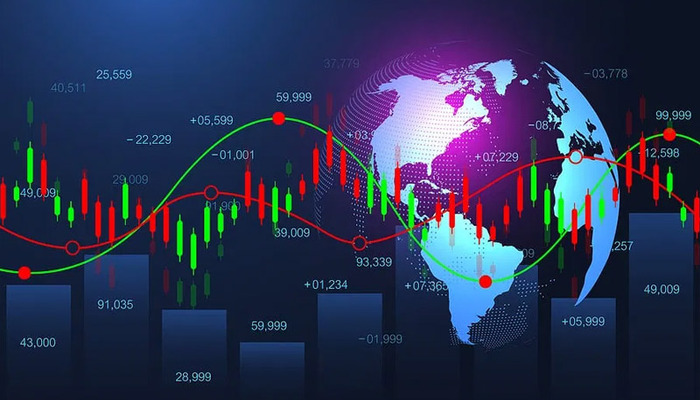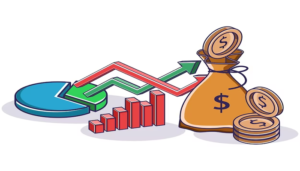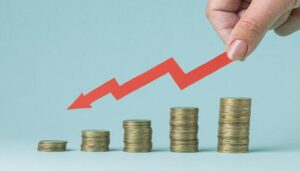Trading Forex is one of the most exciting ways to invest, offering opportunities to profit by buying and selling currencies. With a daily trading volume over $6 trillion, it’s the largest financial market globally, available 24/5 for traders everywhere, including South Africa.
Unlike stock trading, Trading Forex involves currency pairs that fluctuate in value based on various factors like economic performance and geopolitical events. This constant movement creates numerous chances for profit.
Ready to dive into Forex trading? Keep reading to learn how to get started with the basics and avoid common pitfalls!
What is Forex Trading?
Trading Forex involves buying and selling currencies in the foreign exchange market. The goal is to make a profit by taking advantage of changes in currency values.
The Forex market is the largest financial market in the world, with a daily trading volume of over $6 trillion. This market operates 24 hours a day, five days a week, making it highly accessible for traders in South Africa and around the world.
Unlike the stock market, where shares of companies are bought and sold, in Trading Forex, you’re dealing with currency pairs, such as the US Dollar (USD) and the South African Rand (ZAR).
The value of a currency pair fluctuates constantly due to various factors such as interest rates, economic performance, and geopolitical events.
How Does Forex Trading Work?
To understand Trading Forex, it’s important to grasp how currency pairs work. A currency pair consists of two currencies: the base currency and the quote currency.
The base currency is the first currency in the pair, and the quote currency is the second. For example, in the pair EUR/USD, the Euro (EUR) is the base currency, and the US Dollar (USD) is the quote currency.
When you trade Forex, you are either buying or selling the base currency in exchange for the quote currency. If you believe that the value of the base currency will rise relative to the quote currency, you buy the pair.
If you think the base currency will decrease in value, you sell the pair.
Benefits of Forex Trading
Trading Forex offers numerous advantages, especially for beginners in South Africa. Here are a few reasons why it’s worth considering:
-
High Liquidity: The Forex market is the most liquid in the world, meaning that traders can easily buy and sell currencies without experiencing significant delays or price fluctuations.
-
Accessibility: With the rise of online trading platforms, anyone with an internet connection can participate in Trading Forex, including those in South Africa.
-
24-Hour Market: Forex trading is open 24 hours a day, five days a week, which means you can trade at your convenience, no matter where you are in the world.
-
Leverage: Forex trading often involves the use of leverage, allowing you to control a larger position with a smaller investment. However, leverage can be risky, so it’s important to understand how to use it responsibly.
-
Diversification: Forex trading provides an opportunity to diversify your investment portfolio, especially if you’re already investing in other asset classes such as stocks or commodities.
Getting Started with Forex Trading in South Africa
For beginners in South Africa, starting in Trading Forex can be an exciting yet challenging venture. Here are some essential steps to help you get started:
1. Learn the Basics of Forex Trading
Before diving into Trading Forex, it’s important to educate yourself. There are plenty of free resources, including online courses, eBooks, and YouTube tutorials, that cover the basics of Forex trading. Some key concepts to familiarize yourself with include:
- Currency pairs and how they work
- The role of market orders and limit orders
- Understanding leverage and margin
- The concept of pips (percentage in point)
- Technical and fundamental analysis
2. Choose a Reliable Forex Broker
The next step is to choose a reliable Forex broker. In South Africa, several brokers offer Forex trading services, but it’s important to select one that is licensed by the Financial Sector Conduct Authority (FSCA) to ensure your funds are protected. Look for brokers with:
- Competitive spreads and fees
- User-friendly trading platforms
- Access to educational tools and resources
- Good customer support
3. Open a Demo Account
Once you’ve selected a broker, open a demo account. Most brokers offer demo accounts that allow you to practice Trading Forex without risking real money. This is an excellent opportunity for beginners to test strategies, learn how the trading platform works, and get a feel for the market.
4. Start with a Small Investment
When you’re ready to begin Trading Forex with real money, start small. Many brokers allow you to trade with a small deposit, giving you the flexibility to start with a low risk.
As a beginner, it’s crucial not to overextend yourself and to avoid the temptation to invest more than you can afford to lose.
5. Develop a Trading Strategy
Successful Forex traders in South Africa often use specific strategies to help them make informed decisions.
These strategies can be based on technical analysis (looking at past price movements) or fundamental analysis (examining economic factors that may influence currency prices). You can also combine both approaches to create a well-rounded trading strategy.
Some popular Forex strategies include:
- Scalping: A strategy that involves making numerous small trades to take advantage of minor price movements.
- Day Trading: This involves opening and closing positions within the same trading day.
- Swing Trading: Traders hold positions for several days to capitalize on price swings.
6. Manage Your Risks
One of the key aspects of Trading Forex is managing risk. Forex trading can be highly volatile, and it’s essential to have a risk management plan in place. This may include setting stop-loss orders, limiting the amount of capital you risk per trade, and using leverage wisely.
7. Keep Track of Your Performance
As a beginner, it’s essential to keep track of your trading performance. Record every trade, including your entry and exit points, the amount of capital you risked, and the outcome. This will help you analyze your trades, learn from mistakes, and improve your overall strategy.
Common Mistakes to Avoid in Forex Trading
Even experienced traders can make mistakes in Trading Forex, but beginners are especially vulnerable. Here are some common mistakes to avoid:
-
Overtrading: Trading too frequently can lead to emotional decisions and higher risks. Stick to your strategy and avoid chasing quick profits.
-
Ignoring Risk Management: Failing to use stop-loss orders or risking too much of your capital can result in significant losses. Always manage your risk carefully.
-
Trading Without a Plan: Entering the market without a clear strategy can lead to unpredictable results. Develop a plan and stick to it.
-
Being Impulsive: Forex trading is not about making quick decisions based on emotions. Take your time, analyze the market, and make thoughtful decisions.
Conclusion
Trading Forex can be a rewarding way to invest and grow your wealth, especially for beginners in South Africa.
By learning the basics, selecting a trustworthy broker, and practicing good risk management, you can gradually build your skills and increase your chances of success in the Forex market.
Remember, patience and discipline are key when starting your Forex trading journey.
As you continue to develop your skills, always stay updated with market trends and consider seeking professional advice when necessary. With the right approach, you can embark on your journey to becoming a successful Forex trader in South Africa.





